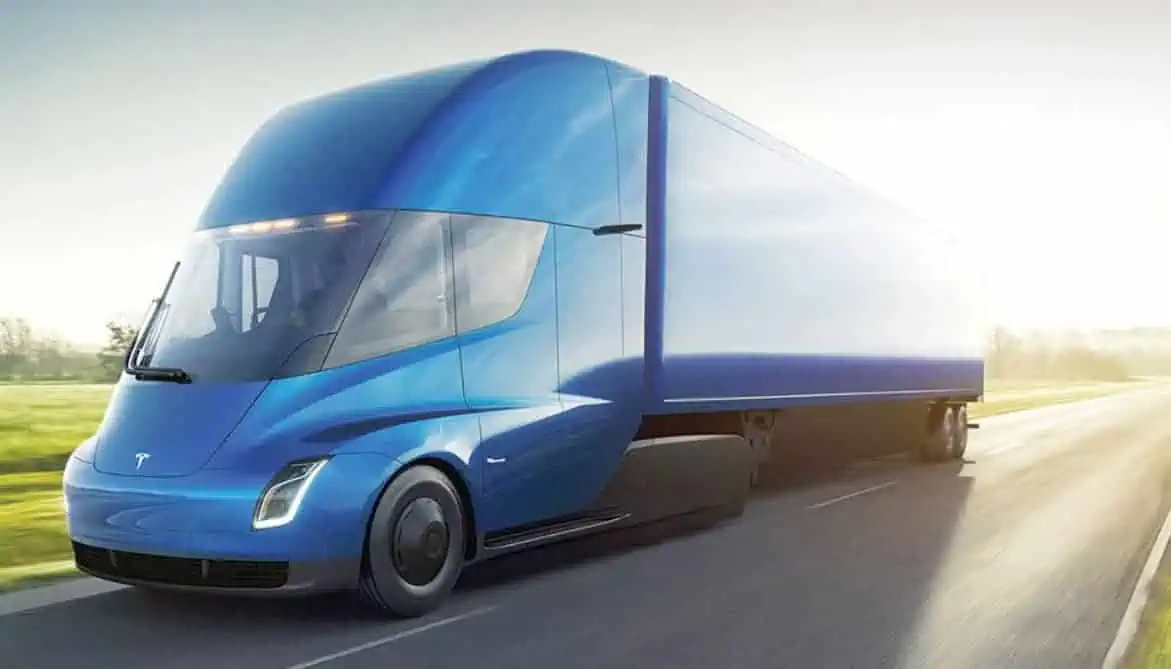Three new Tesla Semis joined the North American Council for Freight Efficiency’s (NACFE) 2023 Run on Less program to demonstrate its capabilities in real-world settings, Electrek reports.
Tesla Semi impresses at the Run for Less event
Tesla Semi trucks underwent the tests during the event with its maximum payload capacity on up to 500-mile round trip.
GEOTAB and the NACFE recorded Tesla’s all-electric trucks from PepsiCo’s fleet, which Rocky Mountain Institute’s Dave Mullaney shared.
Below are the results on the first day, as indicated by the electric trucking researcher in his LinkedIn post:
| Tesla Semi #1 | Tesla Semi #2 | Tesla Semi #3 |
| -335 miles on a single charge over 8 hours. day ended with 17.5% SOC left, good for a little bit of a buffer. – Truck was doing highway operations – driving 65% of the time with speed predominantly at 62 mph. | -227 miles over about 6 hours. day ended with 27% SOC. -Spent about half its time idle but mostly highway speeds when driving This truck may have been loaded more heavily as it showed a somewhat shorter range than Truck 1. | -377 miles with SOC bottoming out at 1.6% – no buffer there! -almost exclusively highway driving at 62 mph. |
Meanwhile, below are the test results on Day 2:
| Tesla Semi #1 | Tesla Semi #2 | Tesla Semi #3 |
| 334 miles in a single charge with 20% SOC left | 359 miles n a single charge with 19% SOC left | 411 miles with a recharge in the middle to boost its range |
Limits
The results of the three Tesla Semi on Day 1 demonstrated that the 350-mile ranges are real. However, data regarding its load weight are yet to be released. Moreover, the weather during the testing was notably warm, with low winds.
Notably, the payload can significantly affect the truck’s range. Therefore, it would be nicer to have a better insight into these data in such tests, as noted by The Drive.
“Takeaway is that the 350-mile truck is for real, but unknowns remain. Load weight wasn’t published, and weather was warm with low winds. If you want to push these things much beyond 350 in real-world operations, you will need opportunity charging to feel safe doing so. In future days, hopefully, the data will show interesting charging events so we can infer how much time that will take.”
Dave Mullaney, Rocky Mountain Institute
Timeline
Tesla initially delivered the first models of Tesla Semis to customers in December 2022, following a series of delays.
CEO Elon Musk said in 2022 that the company aims to accelerate annual production to 50,000 units in 2024. However, he adjusted this timeline, saying that mass production will not occur until the end of 2024.
As of now, Tesla has only launched limited numbers of Tesla Semis for its first customers, including PepsiCo and Frito Lay.
See Also:
- Tesla Semi clone from JAC spied in China
- Will Tesla Semi’s Megachargers work with the Cybertruck?
- Tesla Semi’s real-world performance breaks expectations
- Tesla Semi to undergo independent testing to confirm actual performance
- A trip to PepsiCo’s Frito Lay facility unveils Tesla Semi specifications
The Tesla Semi is expected to have a base price of USD 150,000 for the 300-mile variant, while the 500-mile variant will cost USD 180,000, as noted by TopElectricSUV. It is set to compete with models like Volvo VNR Electric.






